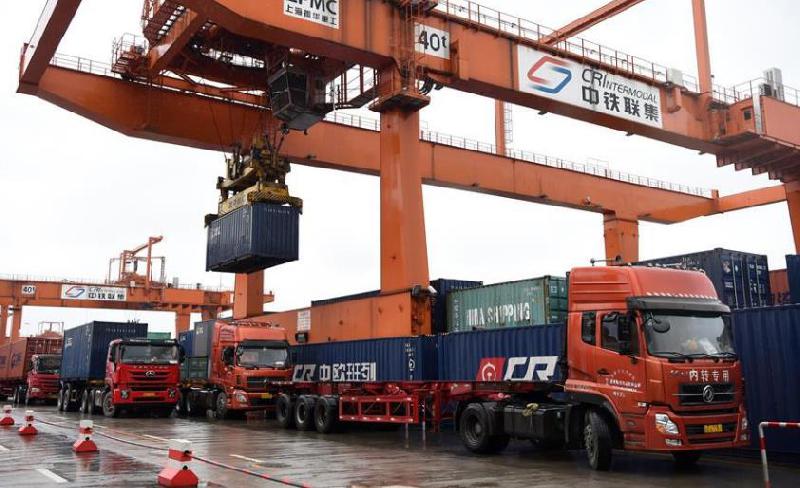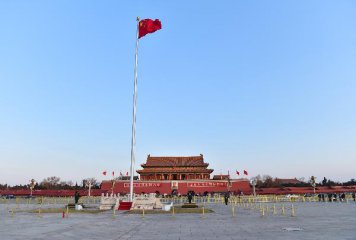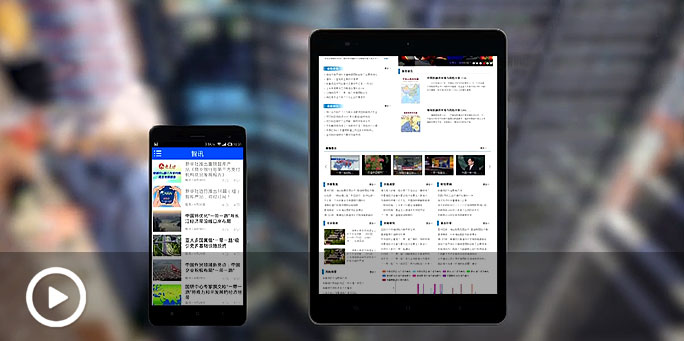
On Tuesday morning, a train loaded with auto parts and paper products thundered out of a station in southwest China's Chongqing Municipality, heading for a port in southern China, where the goods will be further shipped across the sea to Southeast Asia.
It was the 356th freight train since the launch of the China-Singapore rail-sea transit route on the same day a year ago, which further connects 116 ports in 60 countries and regions.
Thanks to the route, agricultural products, auto and motorcycle parts and electricity generators manufactured in inland China will arrive at their Southeast Asian destinations about 20 days faster than the traditional route through Shanghai, while clothing, agricultural and mineral products from Southeast Asia can move north more quickly as well.
About 2 billion yuan (292 million U.S. dollars) of goods have been transported on this route during the past year.
The faster Southern Transport Corridor is an important part of the China-Singapore (Chongqing) Demonstration Initiative on Strategic Connectivity, the third intergovernmental cooperation project between the two countries.
"The Southern Transport Corridor has become the most convenient way to connect western Chinese regions by sea and is reshaping the logistics industry," said Li Muyuan from the China Communications and Transportation Association (CCTA).
Li said longer and more costly logistics through the eastern route to the sea were hindering the development of China's western region.
The China-Europe freight train service that was launched seven years ago has put trade between the region and Europe on the fast track, but the conundrum of opening up the region to the seas remained.
"Thanks to the corridor, the Silk Road Economic Belt and the 21st Maritime Silk Road have been connected seamlessly," Li said.
"The larger transport corridor connects Central Asia and Europe to the west and the Association of Southeast Asian Nations (ASEAN) countries to the south, further linking South Asia, the Middle East and Australia," said Zhai Kun, a professor of international relations at Peking University. "All the countries and regions along the corridor can thus share capacity and market."
Within China, western provinces of Guizhou, Gansu and Qinghai and autonomous regions of Guangxi and Xinjiang have integrated into the corridor. Outside China, Southeast Asian countries such as Vietnam, Laos, Thailand and Cambodia have shown great interest in or signed agreements with China concerning cooperation through the corridor.
In April, a batch of electronic products manufactured in Vietnam arrived in Chongqing via the transit route, before going to Europe on a China-Europe train. The whole process took only 19 days, much shorter than the over 40 days for shipping by sea.
"Southeast Asian countries can use the transport corridor for easier and faster links with Central Asia and Europe to share opportunities brought about by the Belt and Road Initiative," said Gordon Tan, an official with Singapore's Ministry of Trade and Industry.
Within two months, tobacco leaves from Germany and Belgium arrived in the Southeast Asian market and were distributed to other Asian markets such as Japan, which is half the time it used to take
"From Eurasia to the globe, the route has strengthened the interconnectivity among countries in the world and is exploring new space for Belt and Road cooperation," Li of CCTA said.


















Latest comments